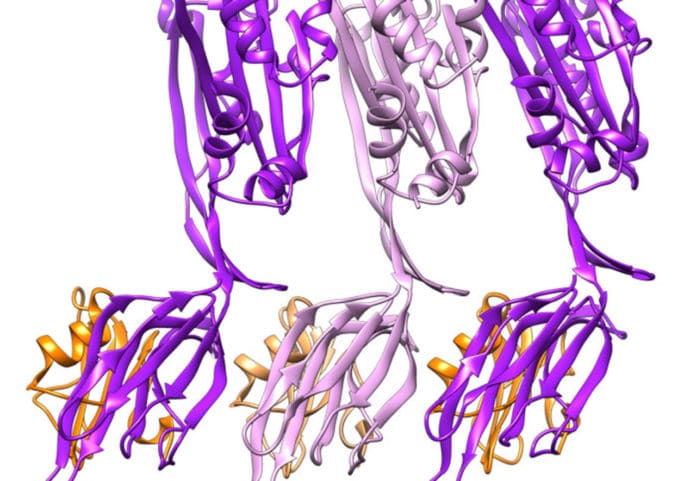Cholesterol-dependent cytolysins (CDCs) are hole-forming proteins that serve as major virulence factors for pathogenic bacteria. They target eukaryotic cells using different mechanisms, but all require cholesterol to pierce lipid bilayers.
How CDCs use cholesterol to lyse cells selectively remains obscure.
Using state-of-the-art imaging techniques, scientists from the Imperial College London and University College London caught these bacterial nanomachines in the act of making a hole.
The study holds the potential to provide a blueprint for repurposing these hole-punching bacteria to kill other targets, such as pathogens that infect plants.
Also, scientists have found a new way to change the type of cell that is attacked.
Lead researcher Dr. Doryen Bubeck, from the Department of Life Sciences at Imperial, said, “We have discovered how this process can be engineered and redirected, potentially to our benefit, to attack new kinds of cells. This has the potential to turn the tables on pathogens and increase our arsenal to fight them.”
Scientists stall CDCs in the act of forming the hole. Using cryo-electron microscopy, scientists were able to image CDCs in great detail.
Doing so helps them found- during a crucial phase at the start of the hole-forming process, the CDCs change their shape so that many proteins can come together side-by-side on the membrane to form a ring. One of these changes involved the movement of a horizontal helix structure.
They also found that by engineering the bacteria to tweak this helix’s properties, they could remove the CDC’s dependence on cholesterol. The pathogenic bacteria themselves have no cholesterol, which they may have evolved as a way to protect themselves from their hole-punching proteins.
First author Dr. Nita Shah, from the Department of Life Sciences at Imperial, said: “What’s exciting is that this special helix used by CDCs is also found in many other types of proteins – not only in pathogenic bacteria but also as part of our immune system. So, the clues we’ve uncovered in this study could be applied to tune a variety of hole-punching nanomachines.”
Using the same technique, scientists are willing to investigate other interactions between pathogenic bacteria and host cells. Some CDCs attach to cell membranes by ‘hijacking’ an immune receptor on the surface of the membrane, so the team is looking into related proteins that hijack other receptors to discover different ways to manipulate the process.
Journal Reference:
- Shah, N.R., Voisin, T.B., Parsons, E.S., et al. Structural basis for tuning activity and membrane specificity of bacterial cytolysins. Nat Commun 11, 5818 (2020). DOI: 10.1038/s41467-020-19482-6
